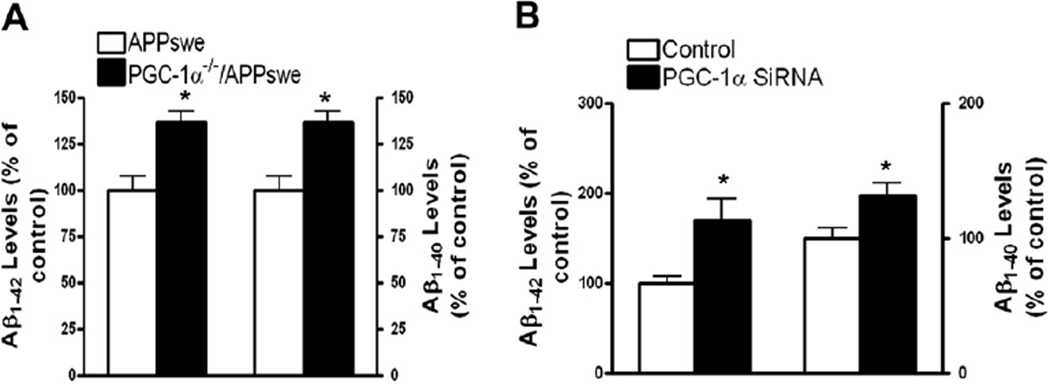Fig. 3.
PGC-1α deficiency promotes the generation of Aβ peptides in vivo and in vitro. (A) Increased Aβ1–40 or Aβ1–42 concentrations in approximately 4-month-old PGC-1α−/−/APP mice relative to age- and sex-matched control APP (Tg2576) mice as assessed by enzyme-linked immunosorbent assay. (B) Silencing PGC-1α in primary corticohippocampal neurons derived from Tg2576 embryos resulted in elevation of Alzheimer’s disease-type Aβ levels in the cultures with conditioned medium relative to control neuron cultures. PGC-1α silencing was achieved by infecting neurons with a PGC-1α shRNA adenovirus (a gift from Dr Puigserver) at 10 MOI. Control cells were infected with a GFP adenovirus. Aβ accumulation in cultured media was assessed 24 hours after adenoviral infection. Values are expressed as mean ± standard error of the mean from 2–3 independent experiments, with n = 3–4 per group; * p < 0.05; ** p < 0.01; 2-tailed Student t test. Abbreviations: Aβ, beta-amyloid; GFP, green fluorescent protein; MOI, multiplicity of infection; PGC-1α, peroxisome proliferator-activated receptor-γ coactivator 1α; shRNA, small hairpin RNA.

